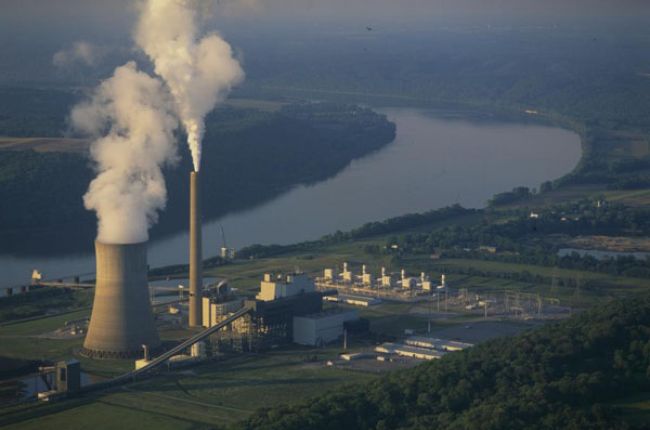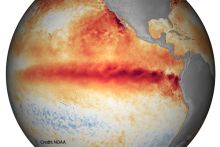
Energy Information Administration FAQs:
"Different fuels emit different amounts of carbon dioxide (CO2) in relation to the energy they produce when burned. To analyze emissions across fuels, compare the amount of CO2 emitted per unit of energy output or heat content.
Pounds of CO2 emitted per million British thermal units (Btu) of energy for various fuels:
Coal (anthracite) 228.6 Coal (bituminous) 205.7 Coal (lignite) 215.4 Coal (subbituminous) 214.3 Diesel fuel and heating oil 161.3 Gasoline (without ethanol) 157.2 Propane 139.0 Natural gas 117.0 The amount of CO2 produced when a fuel is burned is a function of the carbon content of the fuel. The heat content or the amount of energy produced when a fuel is burned is mainly determined by the carbon (C) and hydrogen (H) content of the fuel. Heat is produced when C and H combine with oxygen (O) during combustion. Natural gas is primarily methane (CH4), which has a higher energy content relative to other fuels, and thus, it has a relatively lower CO2-to-energy content. Water and various elements, such as sulfur and non-combustible elements in some fuels reduce their heating values and increase their CO2-to-heat contents."
Learn More:
- Carbon Dioxide Emissions Coefficients By Fuel (Data), Energy Information Administration
Table of CO2 emissions per volume or mass of fuel and per amount of energy produced during combustion for a wide variety of fuel types.
- Greenhouse Gas Reporting Program (Website), Environmental Protection Agency
Program collecting reported emissions data from thousands of facilities across a variety of industries, covering roughly half of all U.S. emissions.
- Life Cycle Assessment Harmonization (Website), National Renewable Energy Laboratory
Report on the total greenhouse gas emissions involved in generating electricity from a wide range of sources, including coal, oil, natural gas, nuclear, wind, hydropower, geothermal, biofuels, and different types of solar power






